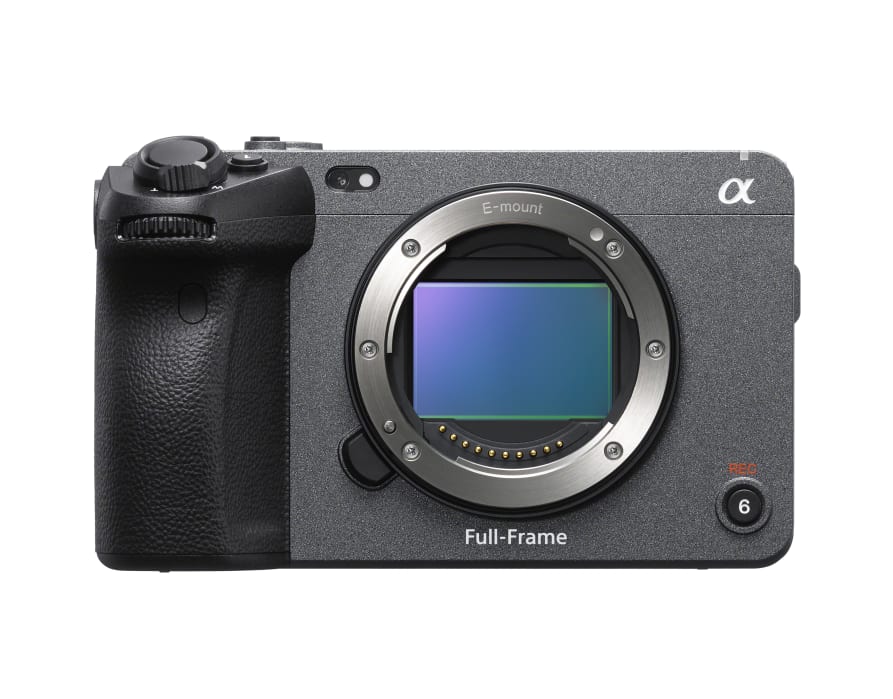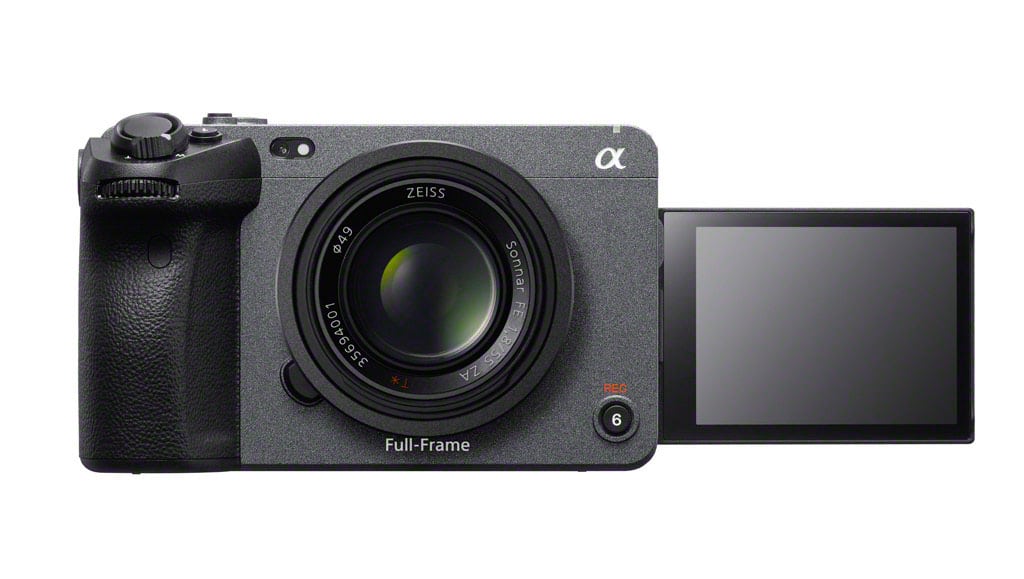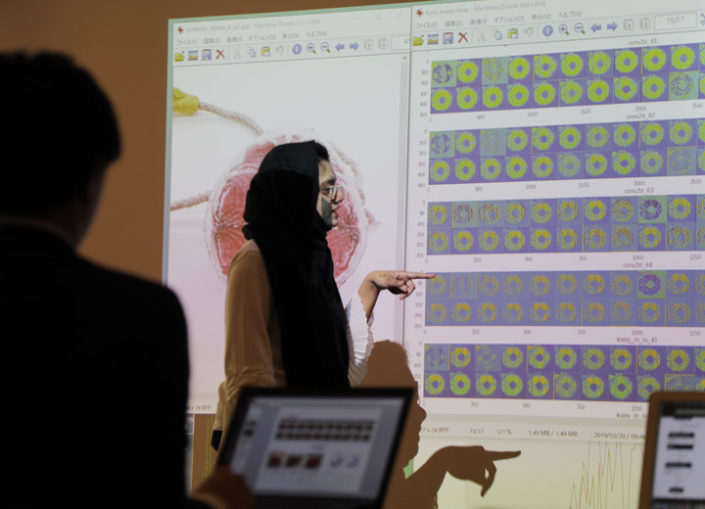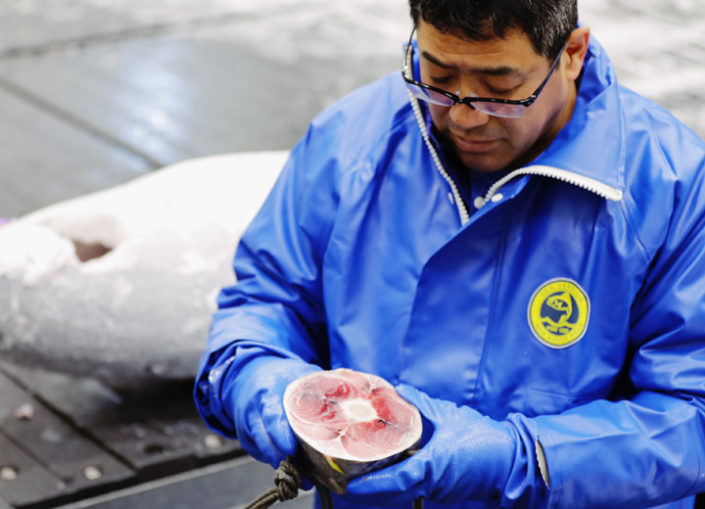- 2 megapixel full-frame back-illuminated CMOS Exmor R™ sensor and BIONZ XR™ image processing engine
- Ultra-high sensitivity with ISO expandable to 409,600 for very low light conditions and 15+ stops of dynamic range
- S-Cinetone™ look profile which is inspired by the digital cinema camera VENICE’s colour science, also used in FX9 and FX6 Cinema Line cameras, and records up to 4K 120p
- Compact and lightweight body design with high operability for hand-held shooting, gimbal and drone-mounted work
- Multi-thread (1/4-20 UNC) body makes it easy to mount accessories
- Detachable XLR handle unit with two of XLR/TRS audio input
- “Active Mode” image stabilisation supports handheld movie shooting
- Fast Hybrid Auto Focus, Touch Tracking (real-time tracking) and Real-time Eye AF, also used in other Alpha™ cameras
- Uninterrupted 4K 60p recording (Continued) by Effective heat dissipation and built-in cooling fan

(ASIA PACIFIC, 24 February 2021) – Sony today officially announced the FX3 (model ILME-FX3) camera that combines the best of Sony’s industry-leading digital cinema technology with advanced imaging features from Alpha™ mirrorless cameras to create the ultimate cinematic look.
As the latest addition to Sony’s Cinema Line, the FX3 delivers a cinematic look and professional operability and reliability all in one device that answers the needs of young creators who are looking for new ways to express their creative vision. The new model provides outstanding image quality and usability for small scale and one-person shooting. The FX3 boasts first-class focus performance, optical image stabilisation, handheld shooting design and advanced heat dissipation for extended recording times. All this in a compact, lightweight body that provides the performance and mobility to meet the growing demands of today’s content creators.
“The FX3 was designed to turn creative vision into reality,” said Ryo Ochi, General Manager, Digital Imaging Division, Sony Electronics Asia Pacific. “It allows creators to bring their visual expression into the world of cinema through immersive content. We will continue to support the world’s creators through Sony’s Cinema Line Series.”

Cinematic Look
The FX3 flaunts Sony’s industry-leading image sensor technology to achieve high processing speeds and outstanding image quality. The full-frame, back-illuminated Exmor R CMOS sensor full-frame 10.2 megapixel (approx. effective) count for movie recording (and 12.1 effective megapixels for stills) and the BIONZ XR image processing engine team up to ensure high sensitivity with low noise. The standard ISO range is 80 to 102,400 (expandable to 409,600 when shooting a movie), and dynamic range is an impressively wide 15+ stops2.
In response to a growing need for more expressive depth, the FX3, along with FX9 and FX6 Cinema Line cameras, allows users to create a cinematic look without post-production using S-Cinetone. Based on the colour science inspired by Sony’s flagship VENICE camera, S-Cinetone delivers natural mid-tones, plus soft colours and smooth highlights that are essential to cinematic look.
Create movies with in-camera 4K recording at up to 120 frames per second3. Extraordinarily smooth slow-motion imagery (up to 5x) at QFHD (3840 x 2160) resolution with autofocus provides new expressive capability.

Sony FX3 Full-frame Cinema Line Camera
Designed for Comfortable Solo-Shooting
The most compact and lightweight Cinema Line camera is ideal for handheld shooting, gimbal and drone-mounted work. It weighs just 715 grams, including the battery and memory cards, and the body is 77.8 mm high, 129.7 mm wide and 84.5 mm deep – without protrusions. The camera grip has been carefully designed to provide optimum flexibility, stability and comfort for long shoots.
Designed for mobility and efficiency, the FX3’s body features five thread holes (1/4-20 UNC) to easily attach compatible accessories while remaining light enough for handheld shooting and making it easy to carry and set up. The supplied XLR handle unit securely attaches to the body via the Multi Interface Shoe without any special tools and provides three additional thread holes for accessories: two on the top and one on the end. External monitors, recorders, wireless microphone receivers, the accessory shoe kit (cold shoe plate), or other add-ons can be securely attached.
To enable high quality audio, the XLR handle unit includes two XLR/TRS audio inputs to the FX3. With an optional XLR microphone, digital audio data can be directly transferred to the camera for outstanding audio quality. Camera settings provide audio recording formats, including 4-channel 24-bit recording. Because the XLR adaptor is integrated into the handle and does not require any additional cables or batteries, it offers stress-free set up.
The FX3 offers Fast Hybrid autofocus (AF) by using the 627 points focal plane phase-detection system during movie recording. The camera is further enhanced with Touch Tracking (Real-time Tracking) where simply touching the desired subject on the monitor screen initiates auto focus and tracking on that subject. Precise and smooth focus is maintained with Real-time Eye AF – technology that pinpoints eye even when subjects are looking down or up at steep angles. Additionally, other AF features have been included and refined in response to feedback from professional users, including AF Transition Speed, AF Subject Shift Sensitivity, intuitive control and AF support when focusing manually. These AF features have been implemented in the FX3 to ensure stable, flexible and precise focusing in any situation and are easy to operate for solo shoots.
The FX3 features 5-axis optical in-body image stabilisation – highly effective for handheld shooting. A high precision stabilisation unit and gyro sensors have made it possible to provide an Active Mode4 that is dedicated to movie shooting in each format, including 4K. In-body image stabilisation means that effective stabilisation can be achieved with a wide range of lenses, including E-mount lenses that do not include stabilisation of their own. In addition, the FX3 records image stabilisation metadata that can be done more practical adjustment during post-production using Catalyst Browse/Prepare.
Expandability and Operability for Content Creators
Operability
No compromises have been made when designing the FX3 in terms of professional control and operability. The buttons frequently used in movie shooting such as ISO, iris, and white balance adjustment are located on the grip and on the top of the body. The design allows solo creators to control the buttons with one hand. In addition, 140 functions assignable to 15 custom keys allow for ultimate efficiency.
The zoom lever located on the top of the grip not only controls compatible powered zoom lenses, but also allows Clear Image Zoom to be also used with unpowered zoom and prime lenses with less image degradation – reducing the number of lenses required for many projects. This lever also enables smooth zooming that is difficult for manual zoom-ring control.
Recording lamps (tally) are provided on the upper front and rear of the camera, so that operator can easily distinguish when the camera is rolling. A side-opening vari-angle touch-panel LCD monitor allows for easy operation and is suitable for gimbal-mounted shots, complicated angles, handheld operation and more. Flexible Exposure Mode allows the FX3 to have a similar Auto/Manual switch operation as other FX series cameras for aperture (iris), shutter speed, and ISO, which can be set independently. A short press of the assigned custom buttons enables switching between locking the dial / Manual, and a long press on the custom buttons allows on-off switching of Auto setting.
Reliability
Creators need more than just refined features and performance; they also need reliability and durability. The FX3 combines a fan for active cooling with effective heat dissipation resulting in uninterrupted 4K 60p recording without thermal shutdown5. The newly developed fan provides high-efficiency cooling.
The new camera also features a dust and moisture resistant design and durable magnesium alloy chassis. Moreover, USB PD (Power Delivery) supports fast charging[x] for uninterrupted recording.
Expandability
The FX3 is compatible with several recording functions including S-Log3 gamma with S-Gamut3.Cine colour space to preserve rich colour and gradation, that can record in a high dynamic range and wide colour gamut. It also supports internal recording in XAVC S™ and XAVC S-I formats in 4K (QFHD) and FHD, and XAVC HS™ (MPEG-H HEVC/H.265, 4K only) format. 4K 60p video in 10-bit 4:2:2 or 16-bit RAW format can be output to an external device via the FX3 HDMI Type-A jack.
The FX3 also offers fast, future-oriented media slots that contributes to unprecedented shooting freedom with two CFexpress Type A cards. The same data can be simultaneously recorded to both cards for backup, and a “relay” mode will automatically switch to the second media card when the first media card becomes full during recording.
The new camera has been developed with advanced connectivity features to better assist professional creators with high-speed wireless LAN functionality (2.4 GHz or 5 GHz band[xii]) and wired LAN connection via a compatible USB-to-Ethernet adaptor. This FX3 also supports remote shooting from PC by Imaging Edge Desktop™ application “Remote” via Wi-Fi, or Superspeed USB 5Gbps connection over USB Type-C® terminal.
About Cinema Line
Cinema Line is a series of cameras that have a filmic look – cultivated from Sony’s long experience in digital cinema production – plus, enhanced operability and reliability that respond to the wide variety of creators’ high demands.
Cinema Line includes the digital cinema camera VENICE, highly acclaimed in the feature and episodic production industry, the professional camera FX9, which is popular for documentary and drama production and the FX6, for grab and shoot action and content creation. With the addition of the new FX3, the most compact camera in the series, Sony offers a true line up of versatile creative tools for all types of visual storytellers.
Pricing and Availability
The FX3 will be available in selected countries in Asia Pacific from March 2021.
Exclusive stories about Cinema Line, FX3 and Sony’s other imaging products can be found at https://www.sony-asia.com/electronics/cinema-line and https://www.sony-asia.com/alphauniverse/home – resources designed to educate and inspire all fans of Sony’s technology for content creation and photography.
A product video on the new FX3 can be viewed at: https://youtu.be/2YXh88hwqnM.
For detailed product information, please visit: https://www.sony-asia.com/electronics/interchangeable-lens-cameras/ilme-fx3.
























































